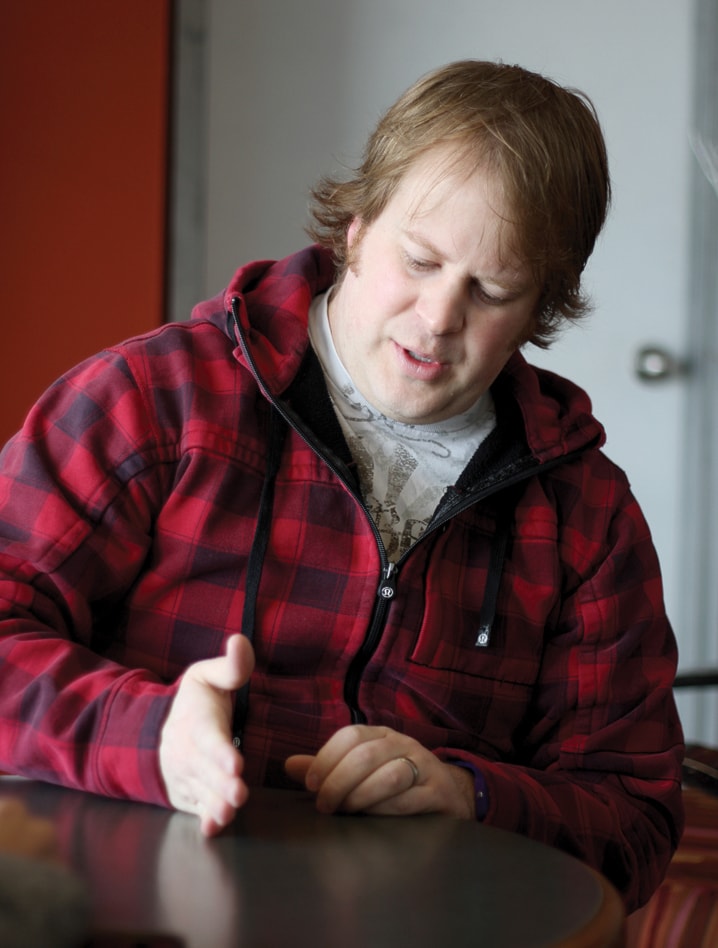Steven Burke Hall was a hard-working entrepreneur who wouldn’t hesitate to help a friend in need.
Hall, who lived in Birchcliff on the east side of Sylvan Lake, put his heart and soul into his two companies, Havan Built Homes and Precision Placement Sand and Gravel.
He loved the outdoors. He loved to shoot hoops. He even started a basketball camp for young children with his wife, Lara, out of Ecole Steffie Woima Elementary School in Sylvan Lake because he felt there was a need.
When he wasn’t working at his two businesses, the 33-year-old was with his wife and their four children — Kobee Lynn, 7, Macee Ann, 5, Burke Michael, 3, and Saydee May, 13 months.
“And when he wasn’t doing that, he was helping someone else,” said Steven Swainson. “That’s the kind of guy he was.”
Swainson, 31, was one of the three men from Sylvan Lake who were in the first hours of a weekend snowmobiling adventure when tragedy struck last Friday.
Hall, Swainson and Casey Johnson were part of a larger group of seven snowmobilers who were sledding in the area known as the Corbin pipeline (between Crowsnest Pass and Sparwood) around 9:30 a.m.
Swainson and others stopped to eat lunch around 12:30 p.m.
Johnson, Hall and Steve Richards of Okotoks went ahead through the trees into a valley that opened up to a hill with a gentle slope.
Swainson said he watched as Johnson drove up the slope and got his snowmobile stuck. Richards followed to help Johnson get unstuck.
“Steve Hall went up and he went past them,” said Swainson. “I don’t know if it was to turn around to help him get unstuck or if it was to turn around and come back down. He went up a little farther and he turned sideways to come down and that’s when the avalanche happened.”
Swainson saw the avalanche hit from the top of the trees and heard someone shout nearby, “Avalanche!”
Johnson and Richards, who were higher up than Hall, managed to survive the avalanche by holding onto nearby trees.
Swainson, who is a family doctor in Sylvan Lake, knew his friend was gone when they uncovered him from about a metre of snow but he still performed CPR for about 45 minutes.
Hall died on the mountain a week before his 34th birthday.
That same day there were special avalanche warnings for backcountry users in the area where the men were snowmobiling.
Swainson said he did not check the avalanche warning and is unsure if anyone else did in the group.
“In the area we typically go to, the pipeline is not really a high avalanche area,” he said. “Of course it was high-risk everywhere . . . there’s different levels of risk — when you read the avalanche rating system, it is for a whole mountain range.”
Swainson said they were all experienced snowmobilers who had received avalanche training. He said they carried the appropriate gear including beacons, probes, shovels and avalanche airbags. He said the men assessed every area they ventured into before continuing and stayed in areas that were treed. Swainson said there were no signs indicating it was an avalanche area.
Swainson wanted to make it clear: they were out for the powder and not high-marking. He said it was a bad slope that they thought was safe but wasn’t.
“Short of not going, we were as prepared as we could have been,” said Swainson. “I think. I feel. I wish we hadn’t gone that day. We all do.”
Two riders drove for help while the men performed CPR and tried to start a fire. Help arrived in about two and a half hours.
Swainson said if he decides to go back to snowmobiling, he’ll be a different rider. He said he will bring a satellite phone and check the avalanche warning system. There was no cellphone reception.
Hall’s funeral is today at 2 p.m. at the Church of Jesus Christ of Latter-day Saints in Cardston.
In lieu of flowers, a trust fund (account number 08259-003-515-667-4) has been set up at RBC Royal Bank.
On Thursday, for the third time in four weeks, the Canadian Avalanche Centre (CAC) issued a Special Public Avalanche Warning for recreational backcountry users. The warning area includes all the mountains of interior B.C. — from Mackenzie and Chetwynd south to the U.S. boundary, and west of the Alberta border to Pemberton and Hope. The warning is in effect from today through to Monday.
“What concerns us is an expected lull in the stormy weather this weekend, which will give backcountry users an opportunity to get up into the alpine,” said Karl Klassen, manager of the CAC’s Public Avalanche Warning Services.
“But there’s up to two metres of new snow in the high country that has not yet stabilized, on top of those same deeply buried weak layers we’ve been concerned about for the past month.”
The CAC strongly recommends all backcountry users take an Avalanche Safety Training course
Backcountry users should check the avalanche bulletin regularly to keep informed of conditions in their area.
More detailed information is also available on the CAC forecaster’s blog. For the bulletins, blog and information on training, check www.avalanche.ca/cac.
crhyno@www.reddeeradvocate.com
